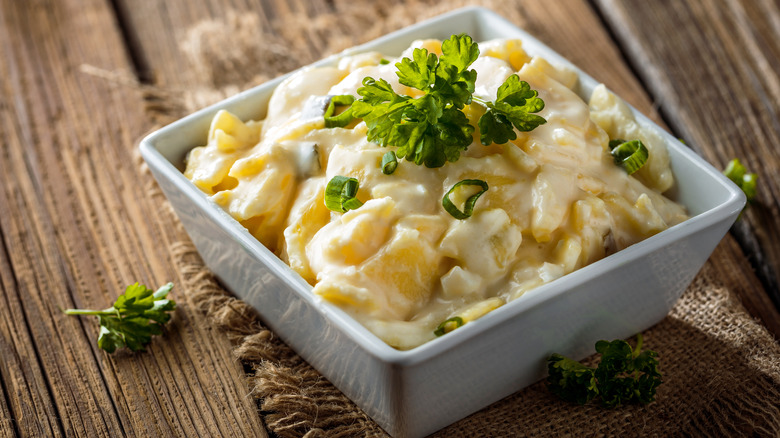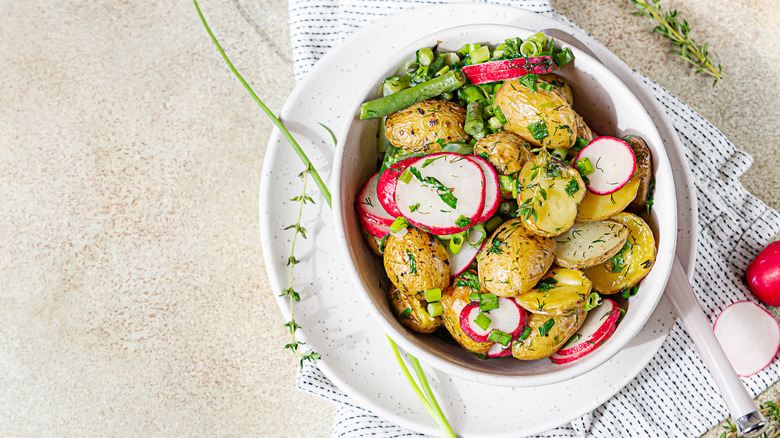Your Definitive Guide To Freezing Potato Salad
It's a blank slate with all the options. That's right, potato salad can be tossed with many different ingredients, coated in just about any savory dressing, and it more than likely will still be a hit. Let's face it, potato salad is a starch-heavy side dish coated in a creamy dressing that claims itself to be a salad. So, what could be better? It also looks very different depending on the culture, according to Allrecipes. From Spanish potato salad using red bell pepper, green olives, and red wine vinegar, to a French potato salad using tarragon vinegar, fresh parsley, and beef consommé, and even a Greek potato salad using oregano, rosemary, red wine vinegar, and lemon juice, there are so many combinations that work magically together.
Oftentimes it's made in large batches for a crowd for barbecues, potlucks, or picnics, which typically yields loads of leftovers. Instead of letting those precious spuds go to waste, why not toss them in the freezer? Well, not so fast, as it depends more on the dressing than it does on the potatoes.
Dairy-based dressings
According to Southern Living, the dressing is what really matters in terms of freezing. For instance, mayonnaise and sour cream-based dressings often separate when frozen and don't taste the same once thawed. This is because mayonnaise is an emulsion, making it harder to hold in the freezer (via Taste of Home). According to Family Favorite Holiday Recipes, an emulsion occurs when small droplets of fat are distributed throughout another liquid that doesn't typically mix, such as water. When whipping these two incompatible liquids together, it creates an emulsion, which yields mayonnaise with a creamy consistency. When mayonnaise is frozen, the two liquids come out of the emulsion, which leads to separation and often water floating at the top.
Furthermore, the texture will be much different than eating it fresh. Does It Go Bad states that freezing sour cream changes the consistency from silky-smooth and creamy to not-so-pretty and grainy. That being said, dairy is the likely culprit behind why dairy- and mayonnaise-based potato salads don't freeze well.
Oil-based dressings
Potato salads using oil-based dressings, such as German potato salad, are typically served warm. They can reheat to a similar taste and text when served fresh, making them much more freezer-friendly than dairy-based dressings. The best way to store potato salad is by placing it in a resealable freezer bag, pushing as much air out as possible, and being careful not to mash the potatoes. From there, your salad can be safely stored in the freezer for up to three months.
According to Taste of Home, one downside to freezing potato salad is that the potatoes will get soggy and likely turn gray. Reheating the potato salad, unfortunately, cannot reverse the coloring of the potatoes, making for a lackluster appearance. If you're trying to reduce food waste, some fun ideas to use up that leftover potato salad includes mashing and rolling it into potato croquettes, tucking it into a tortilla for a unique spin on a wrap, or even roasting them using the oil-based dressing as a way to crisp them up. If your potato salad has a mayonnaise-based dressing, simply wash it off before roasting.


